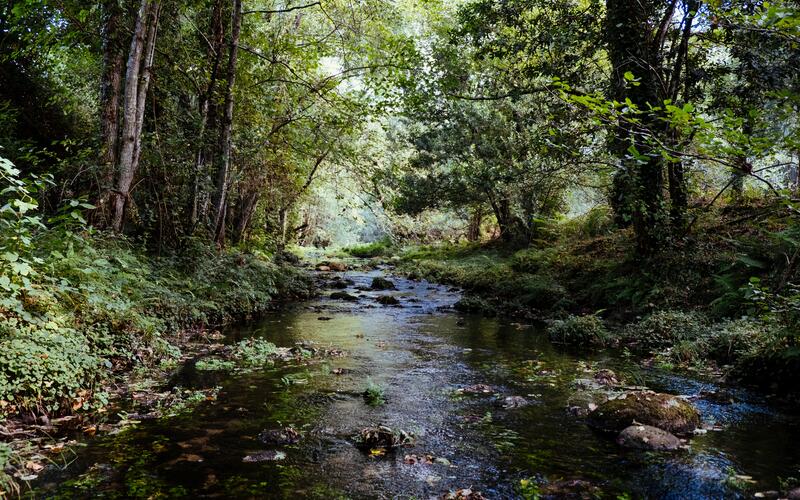Shedding Light on Stream Daylighting

Shedding Light on Stream Daylighting
In cities around the world, there are vast networks of streams hidden below the ground surface. Through a process called daylighting, some cities are looking to rediscover these buried urban waterways. A new study provides a window into this hidden side of cities and tracks how daylighting affects the ecology and water quality of a stream in Norway.
Baho, Didier L., David Arnott, Karoline D. Myrstad, Susanne C. Schneider, and Therese F. Moe. 2021. “Rapid Colonization of Aquatic Communities in an Urban Stream after Daylighting.” Restoration Ecology 29 (5): e13394. https://doi.org/10.1111/rec.13394.
In many cities, as you walk down the sidewalk or cross the street, there’s a good chance you will pass over a buried stream. Now hidden out of sight, these streams once meandered across the landscape. However, in the past, urban planners often thought that these streams occupied valuable space and diverted them underground into pipes and culverts, or in some cases, simply paved over them. These urban planners failed to recognize the value of these small streams for preventing urban flooding, supporting a diverse array of species, and maintaining water quality. Many cities hope to uncover their hidden streams and restore the long-lost benefits they provide. A new study investigates the effectiveness of a stream restoration technique called daylighting.
Daylighting, also called deculverting, involves uncovering previously buried streams. This process removes pavement, culverts, or other layers covering the stream to expose sections or all of the stream to the open air. It also includes techniques that restore or mimic the natural features of stream ecosystems. In a study published in Restoration Ecology, Dr. Didier Baho and his team from the Norwegian Institute for Water Research investigated how stream ecology and water quality respond to daylighting. Over two years, they studied a recently daylighted stretch of stream in Oslo, Norway.
The researchers collected samples of water and benthic algae, which grow on stream beds, and samples of tiny aquatic animals called macroinvertebrates. Both benthic algae and macroinvertebrates are indicators of overall stream ecosystem health. They collected the same types of samples from an upstream section of the stream that had not been buried as a reference. Then, they compared the data from the daylighted section to the reference data to track the effects of daylighting.
The ecological response to daylighting was promising. Benthic algae and macroinvertebrates began to colonize the section of daylighted stream nine months after it was uncovered. While the overall water quality did not improve substantially, the daylighted section retained nutrients including phosphate, nitrate, phosphorus, and calcium to varying extents. Nutrient retention – when nutrients are used or stored within a section of a stream – helps prevent nutrients from washing downstream and creating harmful water conditions for fish and other animals. Due to uncontrolled discharges into a culverted section of stream between the study sights, likely from a leaking sewer line, nutrient levels increased significantly. The capacity of the daylighted section to retain the additional nutrients was limited and highlights the need to address pollution throughout the watershed in addition to restoring individual stream segments.
Daylighting can reestablish communities of aquatic organisms and help restore valuable ecosystem functions. However, it is important to remember that focusing solely on restoring individual sections of streams may be insufficient to address problems throughout the broader watershed. Additional factors that need to be addressed include reducing fertilizer use, fixing leaking sewer pipes, installing stormwater retention ponds, and replacing pavement with vegetation, all of which can help reduce nutrient inputs to surface waters throughout a watershed. When paired with these broader approaches to nutrient reduction, daylighting becomes an even more effective tool to restore urban waters that have been hidden out of sight for too long.




